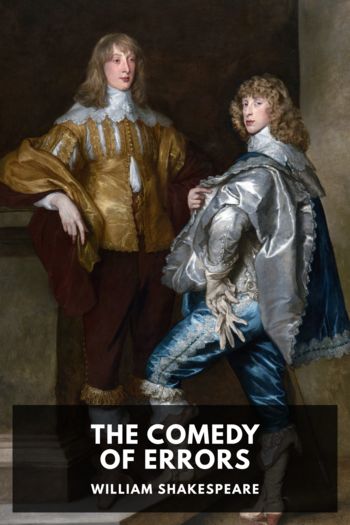The Life of Buffalo Bill, William F. Cody [ebook reader library txt] 📗

- Author: William F. Cody
Book online «The Life of Buffalo Bill, William F. Cody [ebook reader library txt] 📗». Author William F. Cody
When we got back to camp I found old Brigham grazing quietly and contentedly on the grass. He looked up at me as if to ask if we had got away with any of those fellows who had chased us. I believe he read the answer in my eyes.
Another very exciting hunting adventure of mine which deserves a place in these reminiscences occurred near Saline River. My companion at the time was a man called Scotty, a butcher, who generally accompanied me on these hunting expeditions to cut up the buffaloes and load the meat into a light wagon which he brought to carry it in. He was a brave little fellow and a most excellent shot. I had killed some fifteen buffaloes, and we had started for home with a wagon-load of meat. When within about eight miles of our destination, we suddenly ran on to a party of at least thirty Indians who came riding out of the head of a ravine.
On this occasion I was mounted on a most excellent horse belonging to the railroad company, and could easily have made my escape; but of course I could not leave Scotty who was driving a pair of mules hitched to the wagon. To think was to act, in those days; and as Scotty and I had often talked over a plan of defense in case we were ever surprised by Indians, we instantly proceeded to carry it out. We jumped to the ground, unhitched the mules quicker than it had ever been done before, and tied them and my horse to the wagon. We threw the buffalo hams upon the ground, and piled them around the wheels in such a shape as to form a breastwork. All this was done in a shorter time than it takes to tell it; and then, with our extra box of ammunition and three or four extra revolvers, which we always carried along with us, we crept under the wagon and were fully prepared to give our visitors the warmest kind of a reception.
The Indians came on pell-mell, but when they were within one hundred yards of us we opened such a sudden and galling fire upon them, that they held up and began to circle around the wagon instead of riding up to take tea with us. They however charged back and forth upon us several times, and their shots killed the two mules and my horse; but we gave it to them right and left, and had the satisfaction of seeing three of them fall to the ground not more than fifty yards away. On seeing how well we were fortified and protected by our breastwork of hams, they probably came to the conclusion that it would be a difficult undertaking to dislodge us, for they drew off and gave us a rest, but only a short one.
This was the kind of fighting we had been expecting for a long time, as we knew that sooner or later we would be “jumped” by Indians while we were out buffalo hunting. I had an understanding with the officers who commanded the troops at the end of the track, that in case their pickets should at any time notice a smoke in the direction of our hunting ground, they were to give the alarm, so that assistance might be sent to us for the smoke was to indicate that we were in danger.
I now resolved to signal to the troops in the manner agreed on, and at the first opportunity set fire to the grass on the windward side of the wagon. The fire spread over the prairie at a rapid rate, causing a dense smoke which I knew would be seen at the camp. The Indians did not seem to understand this strategic movement. They got off from their horses, and from behind a bank or knoll, again peppered away at us; but we were well fortified, and whenever they showed their heads we let them know that we could shoot as well as they.
After we had been cooped up in our little fort, for about an hour, we discovered cavalry coming toward us at full gallop over the prairie. Our signal of distress had proved a success. The Indians saw the soldiers at about the same time that we did, and thinking that it would not be healthy for them to remain much longer in that vicinity, they mounted their horses and disappeared down the canyons of the creek. When the soldiers came up we had the satisfaction of showing them five “good” Indians, that is dead ones.
Two hours later we pulled into camp with our load of meat, which was found to be all right, except that it had a few bullets and arrows sticking in it.
While I was hunting for the Kansas Pacific railway, I had the pleasure, in the fall of 1867, of meeting the celebrated Kit Carson, one of, if not the oldest and most noted scout, guide, and hunter that our western country has ever produced. He was on his way to Washington. I also met him on his return from the East, and invited him to be my guest for a few days at Hays City, which invitation he accepted. He then proceeded to Fort Lyon, Colorado, near which place his son-in-law, Mr. Boggs, and family, resided. At this time his health was failing, and shortly afterwards he died at Mr. Boggs’ residence on the Picket Wire Creek.
XV Champion Buffalo KillerShortly after the adventures mentioned in the preceding chapter, I had my celebrated





Comments (0)